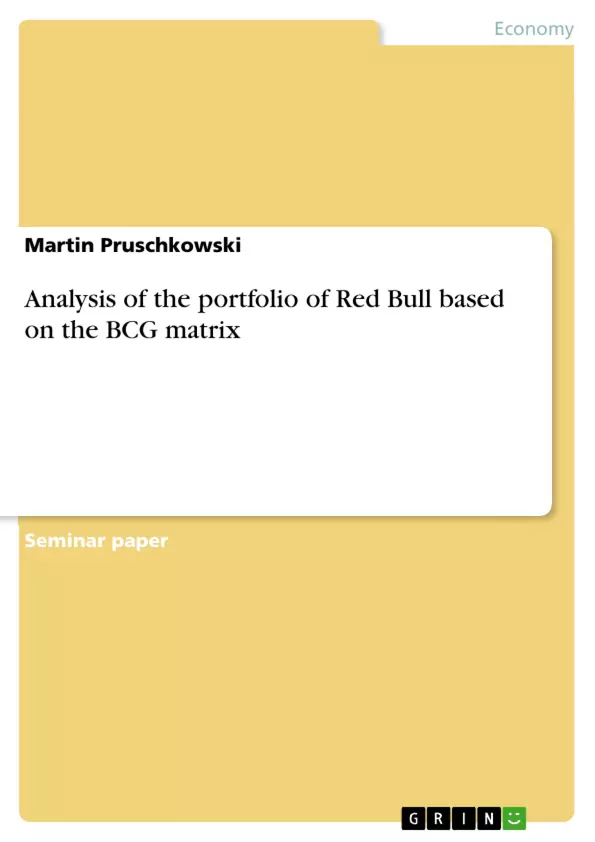The objective of this work is it to introduce and apply one of the most renowned strategic instruments in the portfolio analysis for the company's management – the BCG Matrix. By applying the BCG Model to the Red Bull Company current strength and weaknesses of the portfolio will be uncovered and based on the analysis a decisions can be made about selection, prioritization and alignment of SBU´s to create a balance between risk and performance. Even Red Bull has already started to diversify into other businesses, rather than limiting itself to energy drinks the diversification strategy has not yet success so far, hence it can be expected an unbalanced and therefore risky portfolio.
Inhaltsverzeichnis (Table of Contents)
- Introduction
- Objective and expectation
- Problem definition
- Structure and methods
- The BCG Matrix
- History
- Objective and application
- Strategic business units
- Description of the BCG Matrix
- Benefits and limitation
- Case study: Red Bull Company
- Procedure
- Identification of the SBUS
- Calculation of the dimensions
- The BCG Matrix for the Red Bull Company
- Analysis and derivation of strategies
- Conclusion
Zielsetzung und Themenschwerpunkte (Objectives and Key Themes)
This study aims to utilize the BCG Matrix, a renowned strategic tool, to analyze the portfolio of the Red Bull Company. By applying this model, the study aims to uncover the strengths and weaknesses of the Red Bull portfolio, facilitating informed decisions regarding the selection, prioritization, and alignment of strategic business units (SBUs) to achieve a balance between risk and performance.
- Portfolio analysis of the Red Bull Company
- Application of the BCG Matrix as a strategic tool
- Identification of strengths and weaknesses of Red Bull's portfolio
- Assessment of Red Bull's diversification strategy
- Derivation of strategic implications for Red Bull's future success
Zusammenfassung der Kapitel (Chapter Summaries)
- Introduction: Introduces the Red Bull company, its global market presence in the energy drink sector, and the company's diverse portfolio of business ventures. It also highlights the increasing competition faced by Red Bull, particularly from companies like Coca-Cola.
- The BCG Matrix: Provides a comprehensive overview of the BCG Matrix, outlining its history, objectives, and application in strategic portfolio analysis. The chapter explains the concept of strategic business units (SBUs), the four quadrants of the BCG Matrix, and standard strategies for each quadrant.
- Case study: Red Bull Company: Details the methodology for applying the BCG Matrix to Red Bull's portfolio. It includes a step-by-step procedure for identifying SBUS, calculating the dimensions of the matrix, and creating a BCG Matrix for Red Bull.
Schlüsselwörter (Keywords)
The study focuses on the analysis of the Red Bull Company's portfolio using the BCG Matrix. Key terms and concepts include strategic business units, market share, market growth, diversification strategy, competitive advantage, and portfolio analysis.
- Quote paper
- Martin Pruschkowski (Author), 2014, Analysis of the portfolio of Red Bull based on the BCG matrix, Munich, GRIN Verlag, https://www.hausarbeiten.de/document/432956


